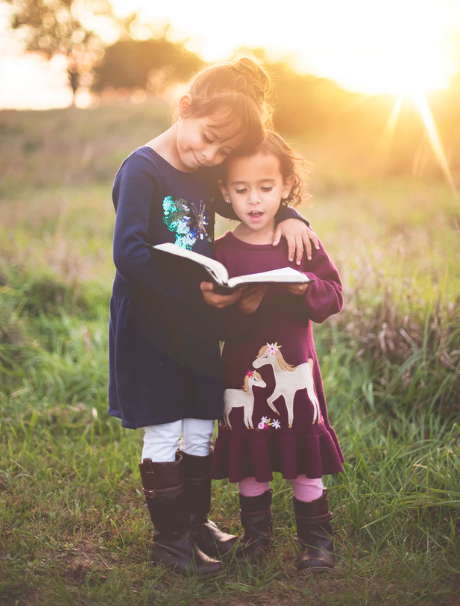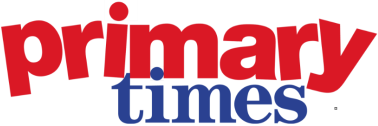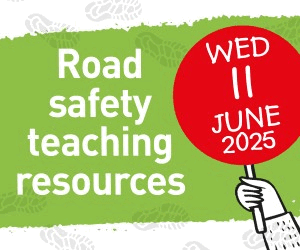Primary Times - the definitive what’s on and where to go family guide of activities and events for children of primary school age. Things to do with your kids during the school holidays including arts and craft activities, music and theatre for children, parties, competitions, days out, and family attractions along with term time drama schools, dance classes, after school clubs and sports activities. Things to do at a place near you!
6 Incredible Poems Children Must Read Before They Leave School
 The topic of poetry may not immediately inspire excitement in, and outside of, the classroom. Unlike stories, from picture books to novels, which children read and will have had read to them for entertainment since they were a baby, poetry seems to be synonymous with learning and in most cases, children are exposed to poetry exclusively within the classroom walls.
The topic of poetry may not immediately inspire excitement in, and outside of, the classroom. Unlike stories, from picture books to novels, which children read and will have had read to them for entertainment since they were a baby, poetry seems to be synonymous with learning and in most cases, children are exposed to poetry exclusively within the classroom walls.
However, unlike novels which some may find monotonous to study as a group, digesting only a few pages at a time, a poem can typically be read and enjoyed within one lesson, making it easier to absorb and understand. This also makes them ideal for supply teachers, who typically only cover a lesson or two with each class.
Poetry comes in many forms: Limerick, Haiku, and sonnet and can be performed in interesting and differing ways: spoken, acted, rapped and sung.
They often contain a range of literary devices, such as similes, onomatopoeia, rhyme and metaphors, making them fantastic learning material.
With National Poetry Day falling on October 4th this year, here is a list of six poems children should read before they leave school.
Little Red Riding Hood by Roald Dahl
Beloved children’s author, Roald Dahl, released a collection of poems titled Revolting Rhymes. True to their names the content of the poems is quite unsavoury, making it incredibly interesting for morbidly curious pre-teens.
A particularly gruesome example from Revolting Rhymes is ‘Little Red Riding Hood and the Wolf’. The poem follows the traditional tale to a point - a big bad wolf picks on poor granny and patiently waits for Red to arrive. And in the same format as the Brothers Grimm story, when Red arrives she notes her granny’s appearance ‘what big ears you have’ with the wolf answering ‘all the better to hear you with’. However, instead of eventually being consumed by the wolf and rescued by a huntsman, Little Red Riding Hood has a surprise:
She whips a pistol from her knickers. She aims it at the creature's head And bang bang bang, she shoots him dead.
But the end of the poem reveals this wasn’t her last encounter with the wolf:
But what a change! No cloak of red, No silly hood upon her head. She said, ``Hello, and do please note. My lovely furry wolfskin coat.''
This poem is shocking and funny, but also is a great example of a rhyming poem, introducing children to poetry with an engaging and easy to understand example.
On the Ning Nang Nong by Spike Milligan
If you are looking to introduce the topic of onomatopoeia, and poetry for that matter, to children then ‘On The Ning Nang Nong’ by Spike Miligan is a great place to start.
This nonsensical poem contains plenty of onomatopoetic language such as:
Where the trees go Ping!
The mice go Clang
and the monkeys all say BOO
In these examples from the poem the onomatopoeic words include “boo”, “clang” and “ping”. It is particularly interesting for younger children as there are no hard-to-spot metaphors or interpretations to be made. The content doesn’t mean anything and the entire poem hinges on the noise created through the use of the onomatopoeia.
Despite a lack of meaning the poem is well structured and follows an interesting rhyming scheme. It is a fun, tongue twisting example of a couple of literary devices that children will have fun performing.
The Tyger by William Blake
The Tyger by William Blake is one for older children, the complex language and harder to grasp interpretation means it is not suitable for those that are just being introduced to poetry but are already familiar with it.
The Tyger has religious undertones, although a creator or God is never directly referenced, the poem is structured as questions aimed at the creator of the tiger. This poem contains strong imagery:
What the hammer? What the chain,
In what furnace was thy brain?
This extract, for example, gives the image of a blacksmiths workshop. Suggesting the tiger was forged in with a hammer with fire. Or as the poem is referencing the creator of the tiger does the furnace suggest the tiger was actually the product of evil, the devil or in fact is the tiger a reference to something different altogether? This leads on to the idea of symbolism.
Children could be challenged to pick out symbolic references and give their interpretations. For example, what does a lamb symbolise in their minds? (new life, innocence, purity etc.)
Is the tiger symbolic of evil? Is the lamb a symbol of innocence and good? Do both animals represent both sides of the creator?
By analysing each stanza individually they can turn what, on first glance, seems like a difficult poem into an easily understood collection of imagery and symbolism, coming to their own conclusion about the meaning of the text.
To Autumn by John Keats
This is one of Keats’ simpler odes (a poem which praises/ mediates on a specific subject) and a great introduction to classic poetry. The content of the poem itself is fairly self-explanatory, it is simply about the season of autumn.
As the title suggests Keats’ poem is addressing autumn as if it were a person, namely a woman. Complementing the ripeness of fruit, the late blooming flowers which the bees enjoy and the image of swallows gathering in the sky. It is a poem that addresses the senses, Keats vividly describes the sights, sounds, tastes and smells of autumn:
Drows'd with the fume of poppies
And plump the hazel shells with a sweet kernel
Hedge-crickets sing
There are also instances of personification which children can pick out. For example:
Thee sitting careless on a granary floor
Thou watchest the last oozings hours by hours.
A season cannot physically sit or watch and therefore these are examples of Keats personifying the season he is addressing, as if in conversation with another person. Children could be challenged to write an ode about another season in a similar style, using personification.
Life Doesn’t Frighten Me At All by Dr Maya Angelou
Dr Maya Angelou was one of the greats of modern poetry, children may be familiar with Phenomenal Woman which was used in a recent advertising campaign for Sport England. However like many of her poems that have underlying, or obvious in some cases, political or sociological messages, ‘Life doesn’t frighten me at all’ is an easy going introduction to the poet’s work, suitable for younger children.
The imagery in the poem is fairly juvenile and therefore will be relatable to children, for example:
Bad dogs barking loud
Dragons breathing flame
Shadows on the walls
These may be things that children themselves are frightened of, or would find scary when confronted with them. Therefore the tone of the poem is easy to convey.
The children could be asked to write down two things they are scared of in the similar rhyming style.
A fun activity to help children to relate to this piece of poetry could involve them drawing the images from each stanza. This will help them to physically visualise all of the things that don’t frighten the author.
In Flanders Fields by Lieutenant Colonel John McCrae
It is important to keep history alive and poetry can help do just that. November 11th is Remembrance Day and should be a time for children to remember the sacrifice made by the soldiers during the wars. ‘In Flanders Fields’ was written by Lieutenant Colonel John McCrae, he was inspired to write the poem after burying a young artillery officer.
The poem depicts the famous poppy fields that grew where the fallen soldiers were buried:
In Flanders fields the poppies blow
Between the crosses, row on row
The first two stanzas describe what has come to pass, told from the perspective of the fallen.
We are the Dead. Short days ago
We lived, felt dawn, saw sunset glow
However the last stanza calls upon the reader to take action and finish the fight they started.
Take up our quarrel with the foe:
To you from failing hands we throw
The torch; be yours to hold it high.
This poem is a fantastic addition to a child’s learning and understanding of the First World War. Children could be asked to write the poem on a poppy shape for Remembrance Day, even just create a drawing based on the poem.
These are just some of the amazing poems out there. Poetry doesn’t need to cause a choir of groans, it can be inspirational and fantastic for learning seemingly complicated literary devices.





